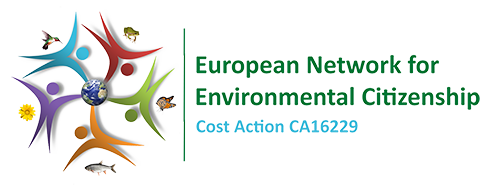Search Results Resources
You have searched in Resources with the following criteria: << Go Back
Formal Education
The search returned 66 results.
Pedro Reis
- From
- 6
- To
- 25+
Let’s save the bees! An environmental activism initiative in elementary school.
English
Portugal
Science education research emphasizes the need to engage students in socio-scientific issues, empowering them to act in a substantiated manner. This study aims to understand the potential of a collective action initiative, focused on the decreasing honey production issue, and on the students’ empowerment for action. A qualitative research methodology was used with an interpretative stance. The participants were 26 3rd grade students and their teacher. Data was collected from the students written documents, and through an interview with the teacher. Results show that students’ engagement in collective action focused on the decreasing honey production issue, required them to mobilize their scientific knowledge to support their actions, as well as the development of several other competences. Students also became aware of the importance, for every citizen, to substantiate their knowledge in order to act, that acting is crucial to overcome issues that may persist and impact future generations, and that only by engaging in action can change take place. Another highlight was the students’ strong engagement in collective action, allowing them to raise awareness this issue in their local community.
Erkan Cermik
- From
- 12
- To
- 16
Developing Environmental Citizenship Knowledge Test and Determining the Knowledge Levels of Secondary School Students
Turkish
Turkey
In this study, a theoretical, valid and reliable knowledge test was developed to measure the knowledge dimension of environmental citizenship in secondary school students. In addition, environmental knowledge levels of secondary school students were examined. The data were collected from a total of 255 secondary school students studying in the seventh and eighth grade1 . Within the framework of environmental citizenship, a multiple-choice knowledge test consisting of 45 items was prepared in accordance with Bloom's taxonomy considering the secondary school environmental curriculum standards. As a result of the item and test statistics using the Classical Test Theory, items with item difficulty and item discrimination indexes at the desired level were selected. Content validity was taken into consideration in the selection of the item. As a result of the analysis, Environmental Citizenship Knowledge Test consisting of 25 items with average difficulty value of 0.54 and average discrimination value of 0.57 was obtained. The internal reliability coefficient of the test (KR20) was determined to be 0.85. Findings showed that secondary school students' level of knowledge about the dissolution time of different substances in nature is low. The sub-dimension, where the students have the highest level of knowledge, is the Mindful Consumption-Conscious Consumer sub-dimension. However, it has been observed that knowledge levels on global warming and greenhouse effect are lower than other subdimensions. The fact that the lowest level of knowledge is the behavior towards environmental protection emphasizes the importance of environmental citizenship education. The test developed in the study is a valid and reliable scale to measure the knowledge dimension of environmental citizenship levels of secondary school students.
Daniela Conti
- From
- 12
- To
- 16
Urban Science – Integrated Learning for Smart Cities
Italian
Italy
- Knowledge
- Skills
- Competencies
- Values
- Attitudes
- Citizenship
- Environmental Citizenship General
- Collective actions
- Actions in Local scale
- Preventing new environmental problems
- Solving environmental problems
- Addressing structural causes of environmental problems
- Practising environmental rights & duties
- Developing healthy relationship with nature
- Inquiry
Over two-thirds of the European population live in cities. Enabling those cities to deliver services sustainably while keeping their citizens safe, healthy, prosperous and well-informed is amongst the most important challenges in this century. The Urban Science European project is an education response to this, to improve the teaching of scientific inquiry and investigation so that students develop the competences to actively contribute to creating healthy cities. Urban Science works through outdoor inquiry-based learning where urban areas become living-laboratories that help students explore how science can create healthier and sustainable places to live. It is solutions based; placing a strong emphasis on creativity and problem solving to ensure scientific understanding can be applied in a meaningful context.
